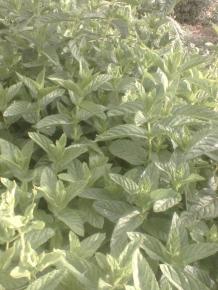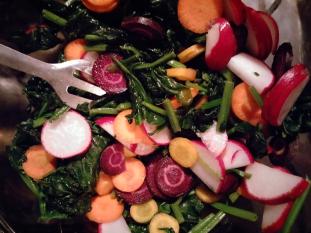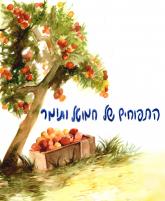This is a continuation of last week’s newsletter.
PART II: MINT, a member of the Lamiaceae
family, which is unlike last week’s garlic chives. It is called nana in Hebrew.
This family of plants is no less distinguished than the garlic family of last week. It is a diverse family of herbs and medicinal plants such as basil, savory, thyme, sage, Melissa … almost everything under the category of "herbs" in our ordering system.
An interesting fact! Please notice that all these family members have "square" stems. Their stems are not round as we are used to but have "corners".
The mint is a perennial plant that sends out shoots (stalks\roots) just below the surface of the earth and that is how it spreads and advances to areas where it identifies better conditions. The Talmud says: "The roots of mint and rue … that were torn out to plant שנעקרו לשתלן" " (oktzin A, B) Yes, it is that simple. Simply pull them out and replant them. We need only to water it and it will grow.
I love these intelligent plants! Of course, what goes together with the beauty of its independence is the difficulty of containing it to the location where I want it to be. Some of you are probably familiar with this from growing mint in flower boxes and pots. A container will keep it in place generally, but sometimes where pots are close to each other, you can see the mint send out a long arm – not a stem, not a root – to a pot nearby. It is a long arm that could be used as a stem and grow tasty leaves or serve as a root which will develop lots of feeding roots. Yes, give mint water and it knows to manage its own growth!
However, the winter is time for a nap. Mint does not grow so much, so I typically trim it and dig at it a little. Because it is in the earth several years, the soil around it becomes densely compacted from all the shoots, stems and roots it sends out. Above ground it is almost not seen in the winter because it has so little growth, but underground it keeps its place in the dense soil. I always feel like I want to air it out and renew it for spring, because then it bursts out sometimes within a day or two with astonishing beauty, smell and taste!
The menthol in the mint consists of small molecules that manage to penetrate the outer layer of our mucous membrane and reach the nerves that are responsible for feeling heat and cold. Eating Mint is felt as fresh and cool due to the inhalation of air (typically lower temperature than that of our body) because these nerves are excited by coming into contact with the menthol.
In Greek mythology it is told that Mint was the mistress of Hades, king of the underworld. (This is of course only one version): Hades fell in love with Persephone, daughter of Dimeter, goddess of agriculture :). Persephone did not live like the other gods on Olympus, but was connected to the ground. One day when she was picking flowers with her friends, Hades burst out of the earth on his chariot and abducted Persephone. The disappearance of Persephone brought heavy sadness to Dimeter, which was expressed as lack of tending to the earth, and which resulted in the winter nap with no yield of plants, and heavy crying – which is the rain that falls on us… (The story continues here )
Meanwhile, of course, Mint had hurt feelings as a result of Hades’ feelings towards Persephone and she greeted Persephone by sending "hands" and with foul words. Hades was so in love with Persephone that he punished Mint by turning her into a plant that resembles her sharp “hand sending” character. Persephone responded by cutting short the mint and stepping on her, which only increased her scent and her rate of growth….
This explains mint’s resilience and ability to manage on its own.
In this country there are four kinds of mint and in the world there are more. The levels of menthol and menthon, the active ingredients which are used for medication, are different in different species. See the difference

Fortunately, nowadays the power of mint is related to healing: It absorbs gases and increases sweating. It is anti-bacterial and therefore is used in toothpaste, mouthwash and more. It is known to be useful and helpful to digestion. It eases pain and spasms in the gastrointestinal system and reduces headaches, joint and tooth pain, and ear aches by increasing bloodflow to the affected area.
It is told that in order to treat insect bites you should place crushed mint leaves on the sore spot. It is also said that consumption of crushed mint leaves mixed with a tablespoon of apple vinegar and honey 3 times a day will increase virility.
Go for it! Since Mint became a plant, she is only useful :)n the kitchen I love to chop it, just like that, and put it into a salad. It refreshes, cools and adds flavor diversity, and, of course, it is healthy and delicious just like the garlic chives from last week :). (in fact, I meant to write about them together, but it turned out too long..) It also goes well in other dishes and desserts.
Have a refreshing, cool and healthy week.
Yours,
Maggie and garden staff
We can expect in our weekly baskets (draft only) :
Nana (Mint) 🙂
Beets
Lettuce
Cabbage
Swiss Chard
Fennel
Tomatoes
Cucumbers
Kohlrabi
Light zucchini
Larger ones also:
Kale
Potato
Garlic chives
Cherry Tomatoes
Fruit baskets:
oranges
loquats
Melon
Larger ones also:
Sweeties
Apricot










